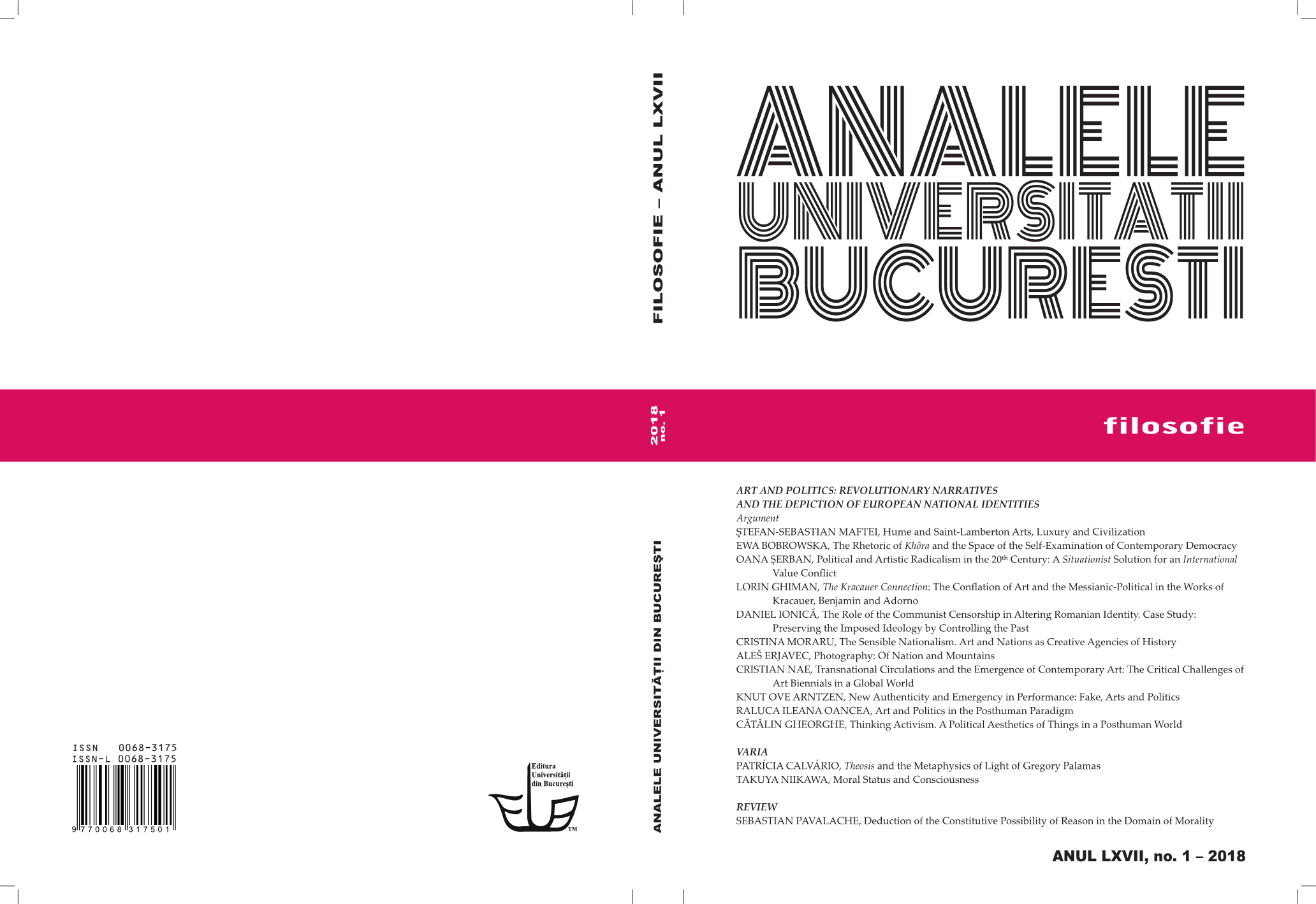Theosis and the Metaphysics of Light of Gregory Palamas
Theosis and the Metaphysics of Light of Gregory Palamas
Author(s): Patrícia CalvárioSubject(s): Politics / Political Sciences, Philosophy, Fine Arts / Performing Arts
Published by: Editura Universităţii din Bucureşti
Keywords: light;theosis;metaphysics;Gregory Palamas;
Summary/Abstract: The corporeal experience of the divine in the corporeal vision of the deifying light (theourgon phos) is a main subject in the philosophical system of Palamas. He states that the experience of the divine culminates in the vision of light, following several ascetic practices like the psycho-physic method and the exercitation of intellect. This divine light is neither material nor natural; however it can be perceived with corporeal eyes. What is the ontological character of this light? About this problem there are some approaches by contemporary scholars. For instances, Clucas (1975) states that the theory of light of Palamas is a manipulation of patristic sources and an arrangement of incongruences to escape from the accusation of messalianism. Beck (1961) holds that whenever Palamas is compelled to defend his notion of light he hides himself in the antinomies. I argue that theosis by the theourgon phos can be understood as a new metaphysics of light that combines concepts like energeia, ousia, phos, photismos, metechein. In this metaphysics God is not understood as lux and the creatures as lumen, as in a scheme of Neoplatonist inspiration, as is the case of Grossesteste. In the metaphysics of light of Palamas the divine is understood as deifying light not in its essence, but in its energy, and the creatures will be that light because they will participate (the body too) in that light without losing their individuality.
Journal: Analele Universității din București – Seria Filosofie
- Issue Year: 67/2018
- Issue No: 1
- Page Range: 227-234
- Page Count: 7
- Language: English

